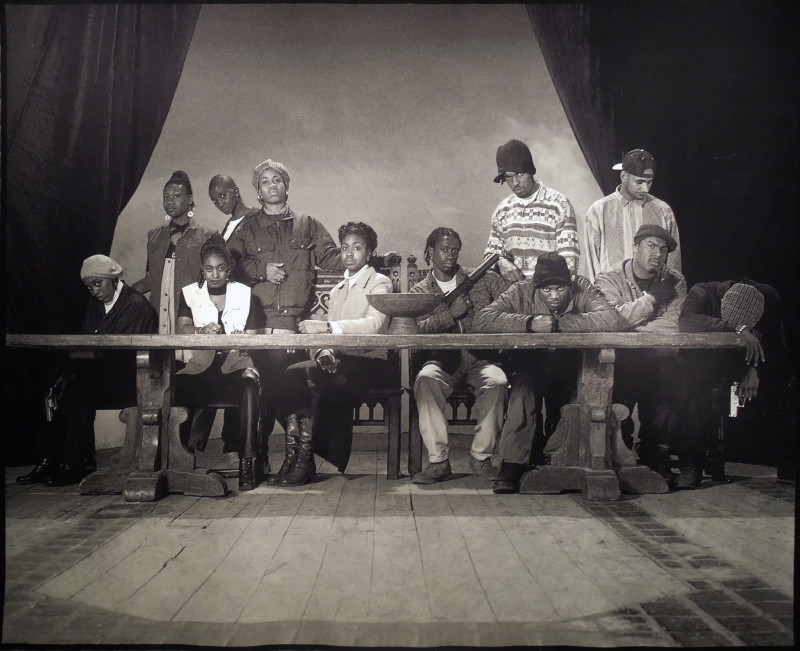
Jacquard tapestry
117 x 148 in.
edition of 3
Faisal Abdu’llah has made some of the most complex, politically telling and aesthetically challenging works of the past decade in the United Kingdom. […] Faisal’s work situates him as the earliest and most accessible single artist of a generation and provides a commentary on the manner in which visual images of Afro-British and Muslim communities, the aesthetic of violence, popular culture sensibility and film have played a critical role in the shaping of contemporary British imagination. What Faisal’s art reacts against is the general assumption that Afro-British artistic production cannot successfully reconcile social conscience with aesthetic viability. In his work, there is a sensibility that affords a gaze at an aesthetic grounded in both an analytic philosophy of popular culture and media and a Western art history.
Perhaps Faisal’s favorite theme has been his utilization of photographic representations and cinematic narrative to put forth a commentary on a general spectator’s relationship with topics including self-reflection, the search for social awareness and the confrontation of long-established assumptions and stereotypes. Faisal’s understanding and use of visual representations does not ignore the history and cultural contexts in which images, semantic and visual expressions originate – including the art world, popular culture or specific cultural traditions (British, Muslim, and Jamaican).
The Last Supper I and II (1996), made in collaboration with Clive Kofi Allen, challenges the accepted imagery of Christianity through a restaging of Da Vinci’s famous composition. Here, Abdu’Allah photographs friends from London’s young Muslim population and transforms the once somber feast into a scene bubbling with confrontation and defensiveness.
– Barbaro Martinez-Ruiz
show prices
Prices and availability are subject to change without notice.The copyright of all art images belongs to the individual artists and Magnolia Editions, Inc.
©2003-2026 Magnolia Editions, Inc. All rights reserved. contact us
